Throughout human history, we’ve built some truly mind-boggling structures that have left archaeologists scratching their heads and conspiracy theorists having field days. From massive stone circles that seem to defy ancient engineering capabilities to underground cities that could house thousands, these architectural marvels have sparked countless debates about whether our ancestors had some extraterrestrial help. The internet is flooded with documentaries claiming that ancient aliens must have guided our forebears, but the reality is far more fascinating than fiction. These structures showcase the incredible ingenuity, determination, and mathematical prowess of ancient civilizations who achieved the impossible with nothing but human creativity and backbreaking labor.
The Great Pyramid of Giza: Mathematical Marvel or Alien Landing Pad?

When you stand before the Great Pyramid of Giza, your jaw drops not just from its sheer size, but from the mind-bending precision of its construction. This 4,500-year-old monument contains approximately 2.3 million stone blocks, each weighing between 2.5 and 15 tons, assembled with such accuracy that you can’t slip a credit card between many of the joints.
The pyramid’s base covers 13 acres and its sides rise at exactly 51.8 degrees, creating proportions that mysteriously relate to the mathematical constant pi. Ancient alien theorists love pointing out that the pyramid’s height multiplied by a billion equals the distance from Earth to the Sun, as if the Egyptians somehow knew this cosmic measurement.
However, modern archaeology has uncovered the real story through papyrus records, worker villages, and tool marks on the stones. The Egyptians developed sophisticated ramps, levers, and organizational systems that allowed teams of skilled workers to move massive blocks using copper tools, wooden rollers, and pure human determination. The mathematical precision came from centuries of pyramid-building experience, not otherworldly guidance.
Stonehenge: Ancient Computer or Ceremonial Calendar?

Standing in the English countryside like a giant’s abandoned toy set, Stonehenge has puzzled visitors for over 5,000 years with its massive trilithons and mysterious purpose. The monument’s stones align perfectly with celestial events, tracking solstices and eclipses with astronomical precision that seems impossible for Neolithic farmers.
Some of the bluestones were transported from Wales, over 150 miles away, leading to wild theories about levitation technology. The precision of the stone placement, combined with its astronomical alignments, has led many to suggest that ancient astronauts provided the blueprint for this prehistoric computer.
Archaeological evidence tells a different story entirely. Recent discoveries have revealed that Stonehenge evolved over 1,500 years, with multiple generations adding and modifying the structure. The builders used sophisticated techniques including earthen ramps, timber scaffolding, and rope systems to position the massive stones. The astronomical alignments reflect the deep knowledge of sky-watchers who spent lifetimes studying celestial patterns for agricultural and religious purposes.
Machu Picchu: Mountain Fortress Built by Giants?

Perched impossibly high in the Andes Mountains, Machu Picchu looks like it was designed by someone who completely ignored the laws of physics and common sense. The Inca somehow managed to transport massive granite blocks up treacherous mountain paths and fit them together so perfectly that earthquakes can’t shake them apart.
The precision of the stonework is absolutely mind-blowing – some blocks weigh over 50 tons and are cut so precisely that they fit together without mortar like a three-dimensional jigsaw puzzle. The terraced agriculture system and sophisticated water management seem far too advanced for a civilization without written language or wheeled vehicles.
Spanish chronicles and Inca oral traditions reveal the incredible human story behind this mountain citadel. The Inca developed techniques for splitting granite using bronze tools, wooden wedges, and thermal expansion. They employed thousands of workers who used rope systems, ramps, and rollers to move stones up the mountain. The “lost city” wasn’t lost at all – local communities knew about it for centuries until Hiram Bingham brought it to international attention in 1911.
Easter Island Moai: Alien Statues or Ancestral Guardians?

Nearly 1,000 massive stone heads dot Easter Island like a mysterious army frozen in time, their backs turned to the ocean as if watching for something on the horizon. These moai statues, some weighing up to 80 tons, seem completely out of place on this remote Pacific island that’s 2,300 miles from the nearest populated land.
The sheer logistics of creating and moving these statues has baffled researchers for decades. How did a small island population manage to quarry, carve, and transport these massive figures across the island without modern machinery? Some of the statues appear to have “walked” to their positions, leading to theories about alien transportation technology.
Recent archaeological work has finally solved the mystery of the walking moai. The Rapa Nui people developed an ingenious technique of rocking the statues upright and using ropes to “walk” them to their destinations. Experimental archaeology has successfully recreated this method, showing how teams of 15-20 people could move a 10-ton statue across the island. The statues represent ancestral figures watching over the community, carved during the island’s cultural peak between 1250 and 1500 CE.
Puma Punku: Ancient Precision Manufacturing?
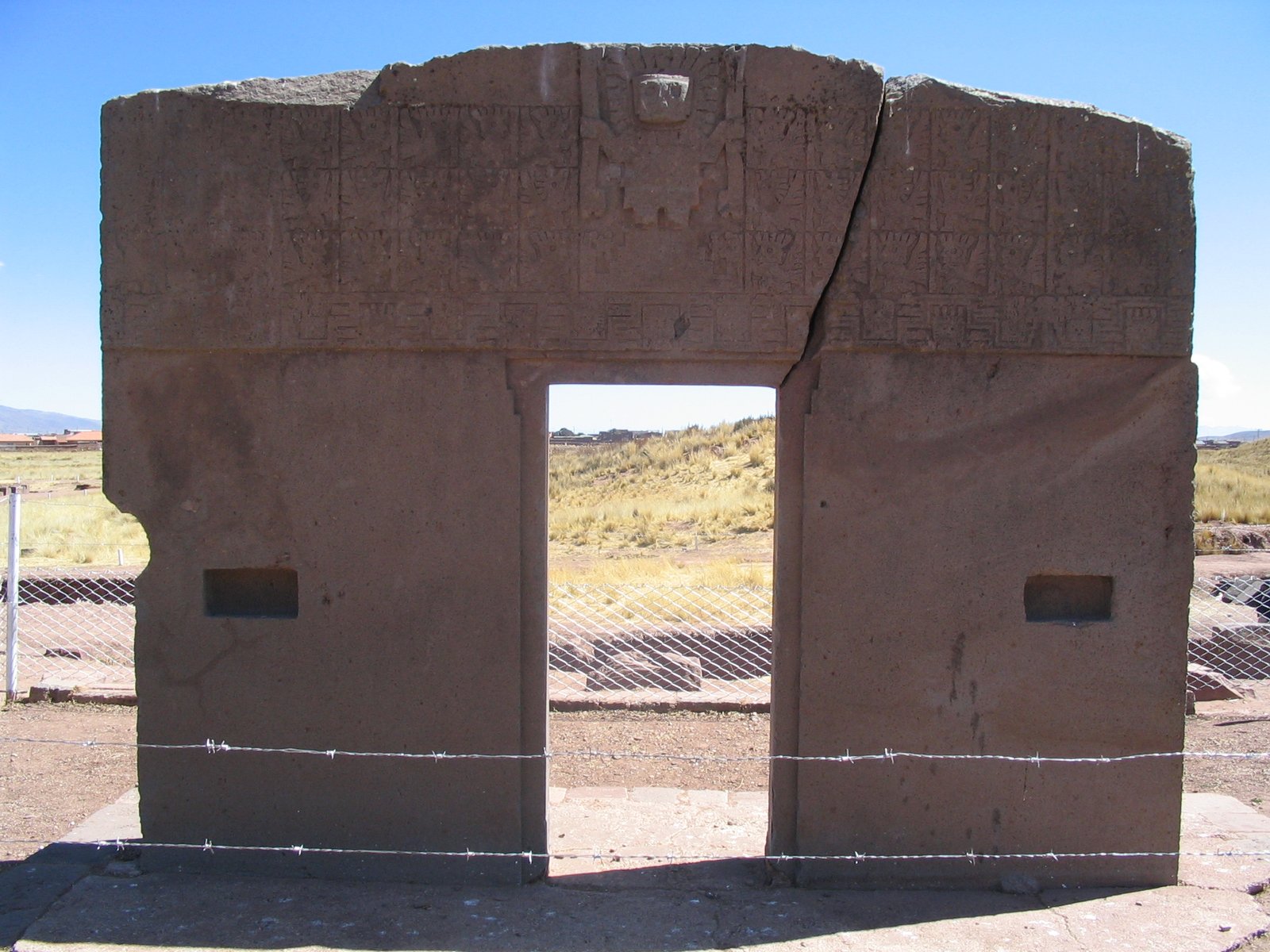
At the Bolivian archaeological site of Puma Punku, you’ll find stone blocks that look like they were cut by laser-guided machinery. These andesite and sandstone blocks feature perfectly straight lines, right angles, and intricate interlocking designs that seem impossible to achieve with primitive tools. The precision is so exact that some blocks fit together with tolerances measured in fractions of millimeters.
What makes Puma Punku even more mysterious is that many of the stones show evidence of being cut, drilled, and shaped with techniques that supposedly didn’t exist in pre-Columbian America. The site’s builders somehow created perfectly smooth surfaces on some of the hardest stone on Earth, leading to widespread speculation about advanced alien technology.
Archaeological investigation has revealed that the Tiwanaku civilization that built Puma Punku around 600 CE possessed sophisticated metallurgy and stone-working techniques. They used copper and Bronze Age tools along with sand abrasives to achieve the precision cuts. The interlocking blocks were designed to withstand earthquakes in this seismically active region. While the craftsmanship is extraordinary, it represents the pinnacle of human engineering rather than extraterrestrial intervention.
Sacsayhuamán: Impossible Inca Engineering?
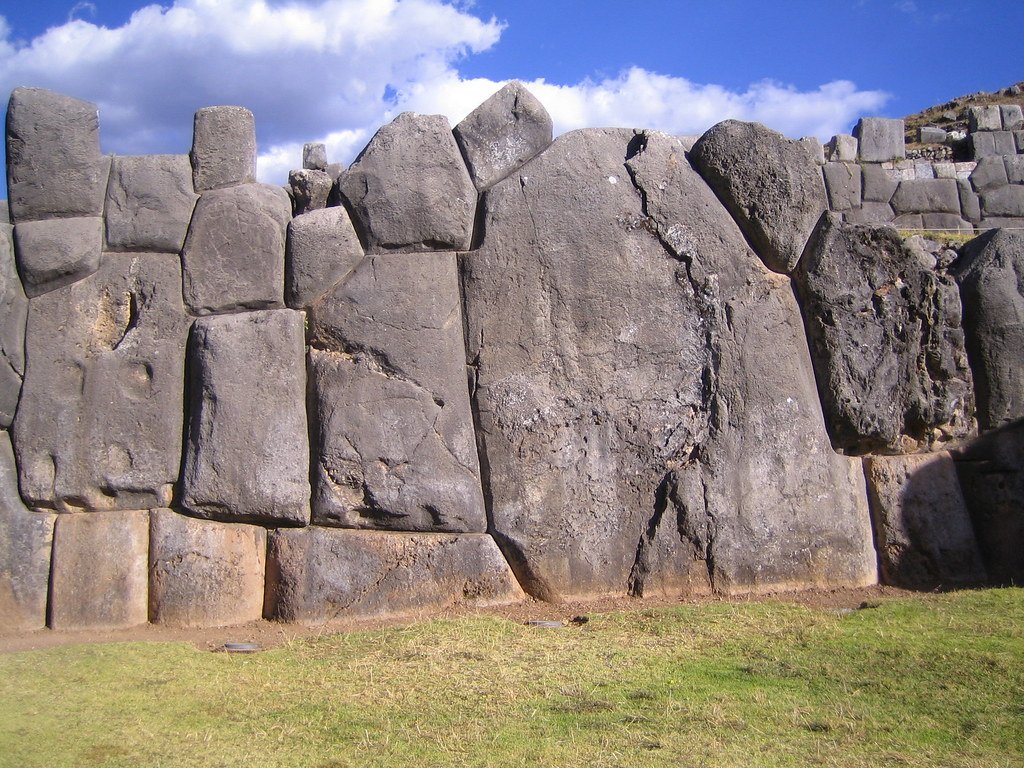
Overlooking the ancient Inca capital of Cusco, the fortress of Sacsayhuamán features walls built from stones so massive that Spanish conquistadors believed they were the work of demons. Some of these limestone blocks weigh over 200 tons and are fitted together with such precision that you can’t insert a knife blade between them.
The construction seems to defy every principle of ancient engineering – the stones have irregular shapes yet fit together perfectly, creating walls that have survived centuries of earthquakes that leveled Spanish colonial buildings. The logistics of quarrying, shaping, and positioning these megalithic blocks without modern technology appears impossible.
Inca oral histories and Spanish colonial records describe the massive human effort required to build Sacsayhuamán. The construction took over 70 years and employed thousands of workers who used bronze tools, wooden levers, and ingenious rope systems. The Inca developed techniques for shaping stones using controlled fracturing and grinding with harder stones. The earthquake-resistant construction reflects sophisticated understanding of engineering principles developed through centuries of building in seismically active regions.
The Nazca Lines: Ancient Runway or Ceremonial Pathways?
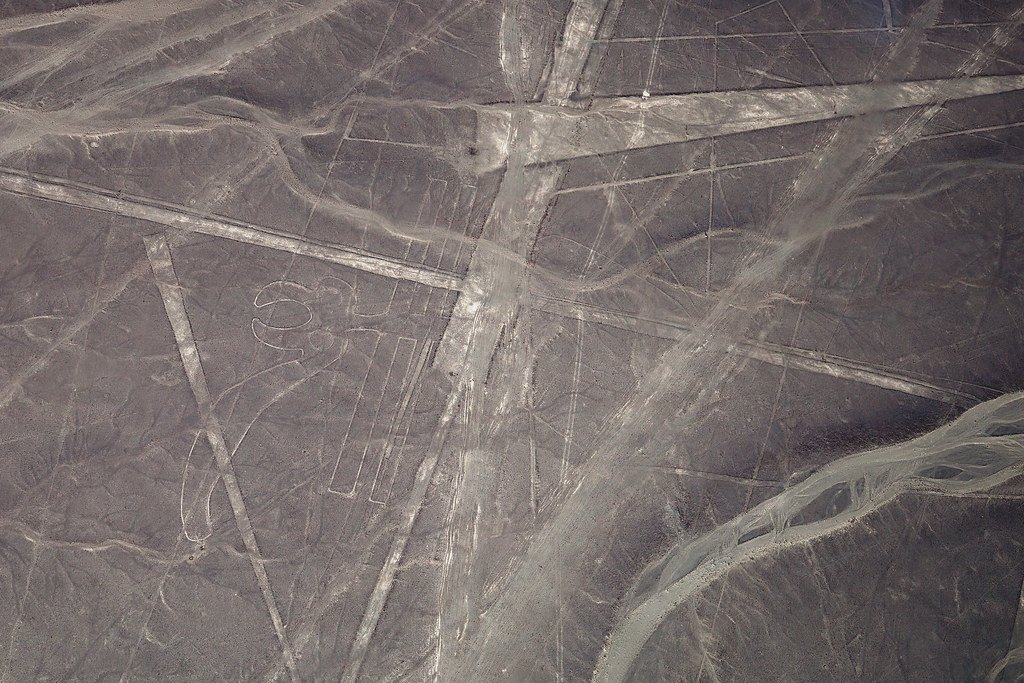
Stretching across the Peruvian desert, the Nazca Lines create enormous geometric patterns and animal figures that can only be fully appreciated from the air. These massive geoglyphs, some stretching for miles, include perfectly straight lines, intricate spirals, and detailed representations of animals like hummingbirds, spiders, and monkeys.
The precision and scale of these lines has led to persistent theories that they served as landing strips for ancient aircraft or navigation markers for extraterrestrial visitors. The fact that the full patterns are only visible from high altitude suggests that the creators had access to flight technology or received guidance from sky-based observers.
Archaeological research has revealed that the Nazca Lines were created between 500 BCE and 500 CE by the Nazca civilization using surprisingly simple techniques. The dark desert stones were removed to reveal the lighter soil beneath, creating the visible lines. The Nazca people used wooden stakes and ropes to maintain straight lines over long distances. These geoglyphs likely served ceremonial and astronomical purposes, with many lines pointing toward celestial events or sacred mountains.
Baalbek Temple Complex: Roman Engineering Marvel

The Roman temple complex at Baalbek in Lebanon contains some of the largest stone blocks ever used in construction. The Temple of Jupiter sits on a foundation that includes the famous “Trilithon” – three massive limestone blocks each weighing approximately 750 tons. These stones are so enormous that modern cranes would struggle to lift them.
Even more mysterious is the “Stone of the Pregnant Woman,” a partially quarried block that weighs an estimated 1,000 tons and remains in the ancient quarry. The precision of the stonework and the sheer scale of construction has led to suggestions that the Romans had access to advanced alien technology or lost engineering techniques.
Historical records and archaeological evidence show that Baalbek was built over several centuries by Roman engineers who pushed the boundaries of ancient construction techniques. They used sophisticated pulley systems, inclined planes, and thousands of workers to move and position the massive stones. The Romans were master engineers who built structures across their empire that still inspire awe today, representing the pinnacle of human architectural achievement rather than extraterrestrial assistance.
Derinkuyu Underground City: Subterranean Alien Base?
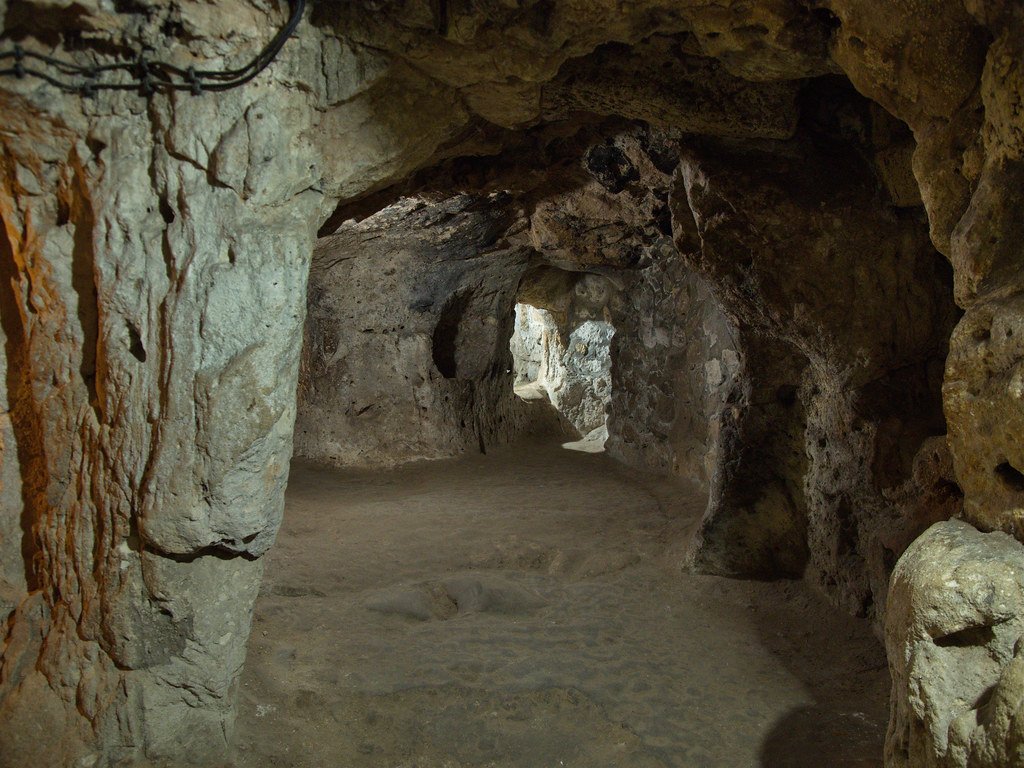
Deep beneath the Turkish landscape of Cappadocia lies Derinkuyu, an underground city that could house 20,000 people across 18 levels extending 200 feet into the earth. This massive subterranean complex includes living quarters, stables, chapels, storage rooms, and sophisticated ventilation systems that maintained air quality throughout the depths.
The engineering required to excavate such a complex while maintaining structural integrity seems impossible for ancient peoples. The ventilation system alone represents a masterpiece of underground engineering, with air shafts precisely calculated to provide fresh air to every level. Some theorists suggest that such advanced underground construction could only have been achieved with alien guidance or technology.
Archaeological investigation has shown that Derinkuyu was carved from soft volcanic rock over many centuries by successive civilizations seeking refuge from invasions. The Phrygians likely began the excavation around 700 BCE, with later Christian communities expanding the complex during periods of persecution. The builders used simple tools like picks and chisels, taking advantage of the soft tuff rock that hardens when exposed to air. The ventilation system follows basic principles of air circulation that ancient engineers understood through trial and error.
Antikythera Mechanism: Ancient Greek Computer
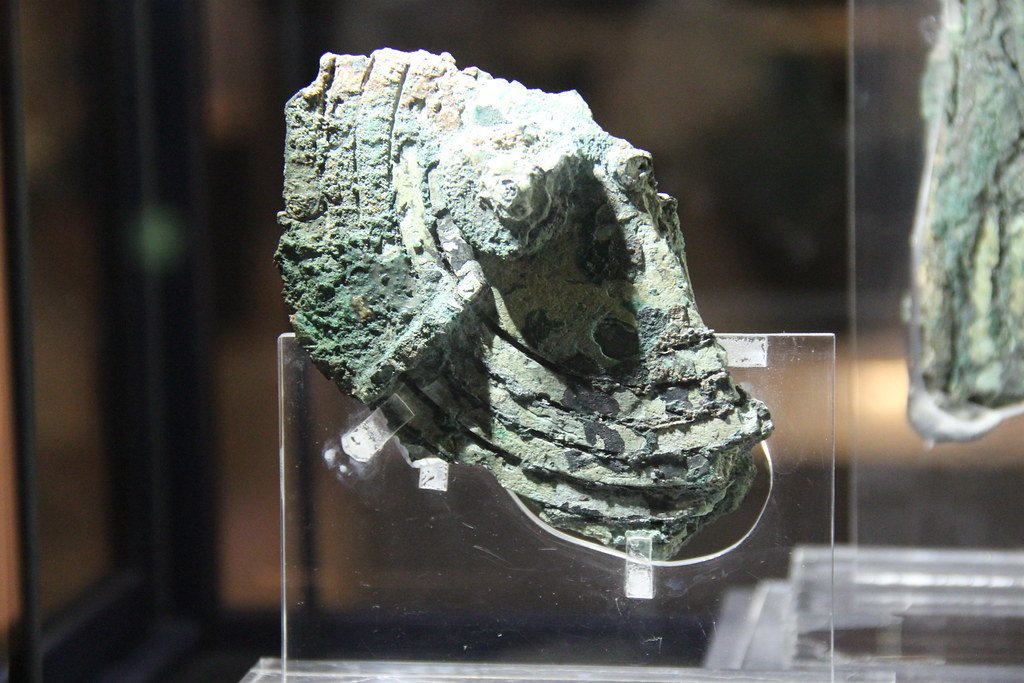
Discovered in a shipwreck off the Greek island of Antikythera, this corroded bronze device looked like nothing more than ancient junk until researchers realized they were looking at the world’s first analog computer. Dating to around 100 BCE, the mechanism contains at least 37 meshing bronze gears that could predict eclipses, track planetary movements, and calculate the timing of Olympic Games.
The sophistication of this device is staggering – it includes differential gears that weren’t reinvented until the 1700s and demonstrates mathematical and astronomical knowledge that historians thought didn’t exist in ancient Greece. The precision of the gear teeth and the complexity of the calculations have led some to suggest extraterrestrial influence on ancient Greek science.
Recent research using advanced imaging technology has revealed that the Antikythera Mechanism represents the culmination of Greek mathematical and astronomical knowledge rather than alien technology. Ancient Greek astronomers like Hipparchus had developed sophisticated models of planetary motion, and skilled craftsmen translated this knowledge into mechanical form. The device shows that ancient civilizations were capable of far more advanced engineering than previously believed, demonstrating human ingenuity rather than otherworldly intervention.
The Real Story Behind Ancient Engineering

When we examine these mysterious structures through the lens of archaeological evidence rather than speculation, a pattern emerges that’s far more inspiring than alien intervention theories. Each of these monuments represents the pinnacle of human achievement during its respective era, showcasing our ancestors’ remarkable ability to solve complex engineering problems with limited resources.
The common thread connecting all these structures is time – they weren’t built overnight by supernatural forces, but developed over generations through trial and error, accumulated knowledge, and incredible human determination. Ancient civilizations had the same intelligence we possess today; they simply focused their intellectual resources on different challenges than we face in our modern world.
What’s truly remarkable is that these achievements were accomplished through human collaboration on a massive scale, with thousands of people working together toward common goals across decades or centuries. The precision and complexity we see in these structures reflects not alien guidance, but the extraordinary things humans can accomplish when knowledge, resources, and determination combine across generations.
Why We Want to Believe in Ancient Aliens

The appeal of ancient alien theories goes beyond simple curiosity about our past – they tap into deeper psychological needs and cultural anxieties about human capability and progress. In our modern world of rapid technological change, it’s somehow comforting to imagine that our ancestors had access to advanced knowledge that we’re only now rediscovering.
These theories also reflect a troubling tendency to underestimate the capabilities of ancient civilizations, particularly those outside Western Europe. When we assume that complex structures in Egypt, Peru, or Cambodia must have been built with alien help, we’re unconsciously perpetuating the myth that certain cultures were incapable of sophisticated engineering and mathematics.
The reality is far more empowering – these structures prove that human ingenuity has no cultural or temporal boundaries. Our ancestors were every bit as intelligent and creative as we are today, and their achievements deserve recognition as purely human accomplishments rather than extraterrestrial collaborations.
Modern Technology Reveals Ancient Secrets

Advanced archaeological techniques have revolutionized our understanding of how ancient structures were built, providing concrete evidence that replaces speculation with facts. Ground-penetrating radar, 3D laser scanning, and computer modeling now allow researchers to understand construction techniques that remained mysterious for centuries.
Experimental archaeology has been particularly revealing, with researchers successfully recreating ancient construction techniques using period-appropriate tools and methods. Teams have moved massive stones using wooden rollers and ramps, carved precise joints with copper tools, and demonstrated that seemingly impossible feats become achievable with enough people, time, and ingenuity.
These discoveries don’t diminish the wonder of ancient achievements – if anything, they make them more impressive by showing the incredible human effort and intelligence required. When we understand how the pyramids were actually built, the accomplishment becomes more remarkable, not less.
The Danger of Alien Theories

While ancient alien theories might seem harmless entertainment, they carry subtle but significant cultural implications that deserve serious consideration. By attributing human achievements to extraterrestrial intervention, we diminish our ancestors’ accomplishments and perpetuate stereotypes about the capabilities of ancient civilizations.
These theories often reflect unconscious biases about which cultures are considered capable of sophisticated engineering and mathematics. It’s no coincidence that ancient alien theories rarely focus on European monuments like Stonehenge’s later additions or Roman engineering, but frequently target achievements in Africa, South America, and Asia.
More broadly, the ancient alien phenomenon represents a form of intellectual laziness that replaces careful investigation with sensational speculation. When we jump to extraordinary explanations for extraordinary achievements, we miss opportunities to learn about the remarkable capabilities of human civilization and the ingenious solutions our ancestors developed for complex problems.
What These Structures Really Tell Us

These mysterious structures reveal profound truths about human nature that are far more inspiring than any alien conspiracy theory. They show that our species has always been driven to create, to build, and to leave lasting marks on the world that express our deepest beliefs and aspirations.
Each monument represents thousands of people working together across generations, sharing knowledge, refining techniques, and pushing the boundaries of what seemed possible with available technology. The precision and complexity we see in these structures reflects not supernatural intervention, but the extraordinary achievements possible when human intelligence, creativity, and determination combine.
Perhaps most importantly, these structures demonstrate that innovation and sophisticated thinking aren’t modern inventions – they’re fundamental human characteristics that have driven progress throughout our history. Our ancestors faced the same basic challenges we do today: how to organize large groups of people, solve complex technical problems, and create lasting achievements that reflect their values and beliefs.
The Human Story Is More Amazing

When we strip away the alien theories and examine these structures as purely human achievements, their true significance becomes clear. They represent humanity at its best – creative, collaborative, persistent, and capable of accomplishing seemingly impossible tasks through shared effort and accumulated knowledge.
The Great Pyramid wasn’t built by aliens with advanced technology; it was built by skilled workers who developed ingenious solutions to unprecedented engineering challenges. Stonehenge wasn’t designed by extraterrestrial astronomers; it was created by Neolithic sky-watchers who spent lifetimes studying celestial patterns and translating their observations into stone.
This human story is infinitely more inspiring than any alien intervention theory because it shows what we’re capable of achieving when we work together toward common goals. These structures stand as eternal reminders that no challenge is too great for human ingenuity and determination.
The next time you encounter claims about ancient aliens building mysterious structures, remember that the truth is far more remarkable than fiction. Our ancestors accomplished these incredible feats through the same qualities that drive human achievement today: curiosity, creativity, persistence, and the willingness to work together toward seemingly impossible goals. These monuments stand not as evidence of extraterrestrial intervention, but as eternal testaments to the unlimited potential of human imagination and determination. Isn’t it more inspiring to know that everything we see was built by people just like us?




